The new OneXFly certainly makes the ROG Ally look like a chonky boi
This is the lightweight portable handheld gaming PC I've been waiting for.
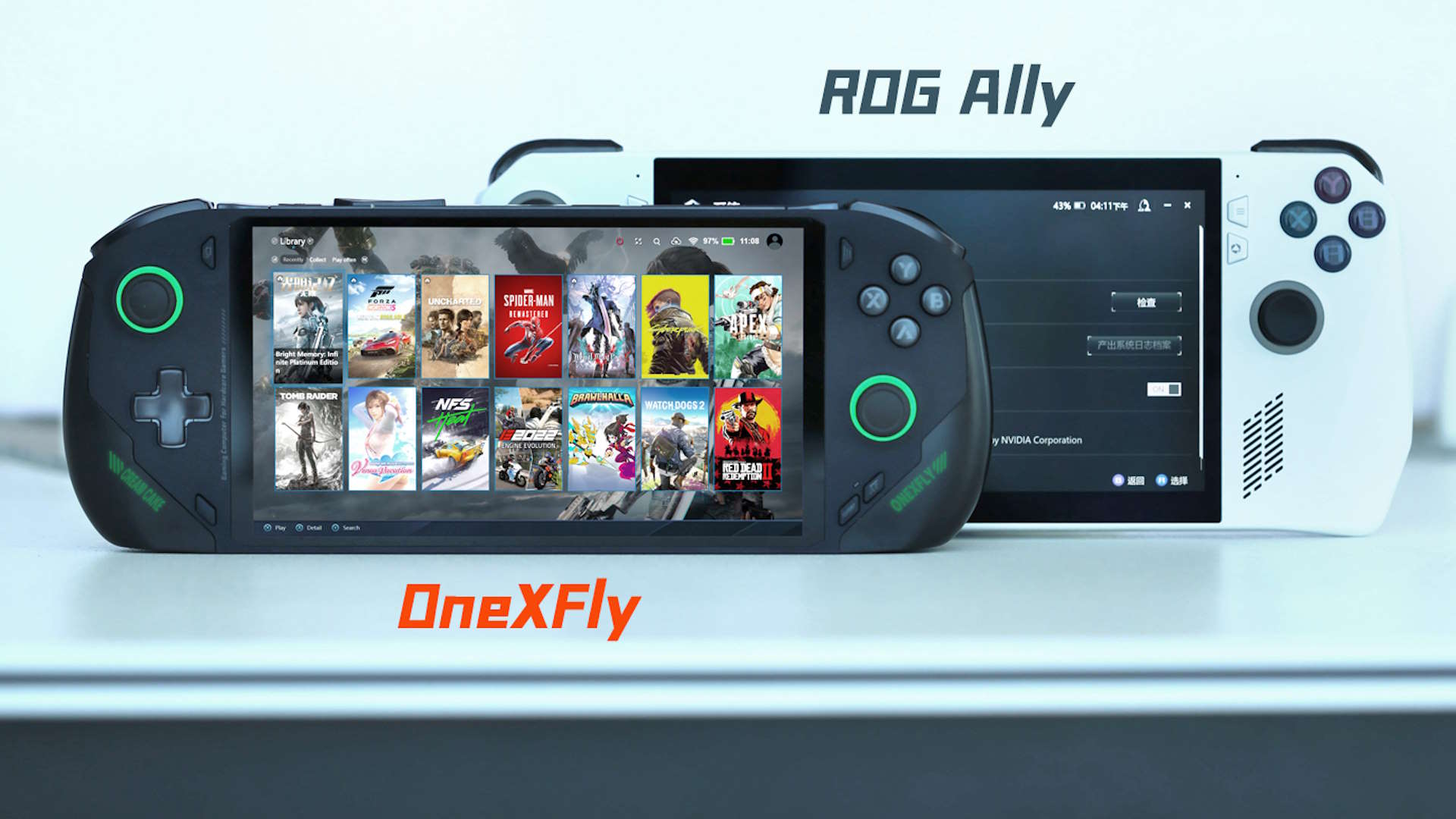
Update July 14, 2023: Updated with new thermal images for the OneXFly under gaming loads.
Original story July 14, 2023: The OnexPlayer OneXFly is looking like it might be bringing everything I want together in a modern handheld gaming PC. I'm waiting to get my hands on a review unit ahead of the launch of the new lightweight device, but I've just got hold of some new images which make it look way more portable than the likes of the Steam Deck or ROG Ally.
Using the same AMD Radeon Ryzen 7 7840U as the AOKZOE A1 Pro I recently reviewed, the OneXFly ought to perform around the same as both it and the ROG Ally. Which is to say it should be a supremely capable mobile gaming slab.
But the key difference is that the OneXFly has been wrapped in a far smaller chassis, theoretically making it easier to slip in a pocket (though I'd recommend wearing a belt—this thing still weighs over half a kilo). That smaller scale is immediately obvious from the side-by-side comparison shots up against the ROG Ally, and in fact makes it look a lot more like those wee game controllers that you stick on either end of your phone.
I never really thought the ROG Ally was too big in my time using it, but I would absolutely welcome the smaller size. I've been regularly using the larger A1 Pro since testing it, and while I'm into the device itself, it does feel far too chonky to be the sort of thing you can just slip into a bag on your way out the door. It barely even fits in the oversize Steam Deck carry case I've co-opted for it.
There doesn't seem to be a compromise here for the scale, either. The full specs sheet I've been given makes it clear that you're actually getting improved hardware over Asus' own highend handheld. Onexplayer is using LPDDR5X-7500, a step up in memory terms compared with the LPDDR5-6400 of the Ally, which ought to perform at the same temperature and under the same power demands, too.
It's also rocking a slightly higher capacity 48Wh battery as opposed to the 40Wh batteries of the Ally and Steam Deck. Honestly, I doubt that's really going to translate into much in the way of a longer battery life in real terms. That was where the AOKZOE A1 Pro stands out with its 65Wh battery.
The biggest gaming news, reviews and hardware deals
Keep up to date with the most important stories and the best deals, as picked by the PC Gamer team.
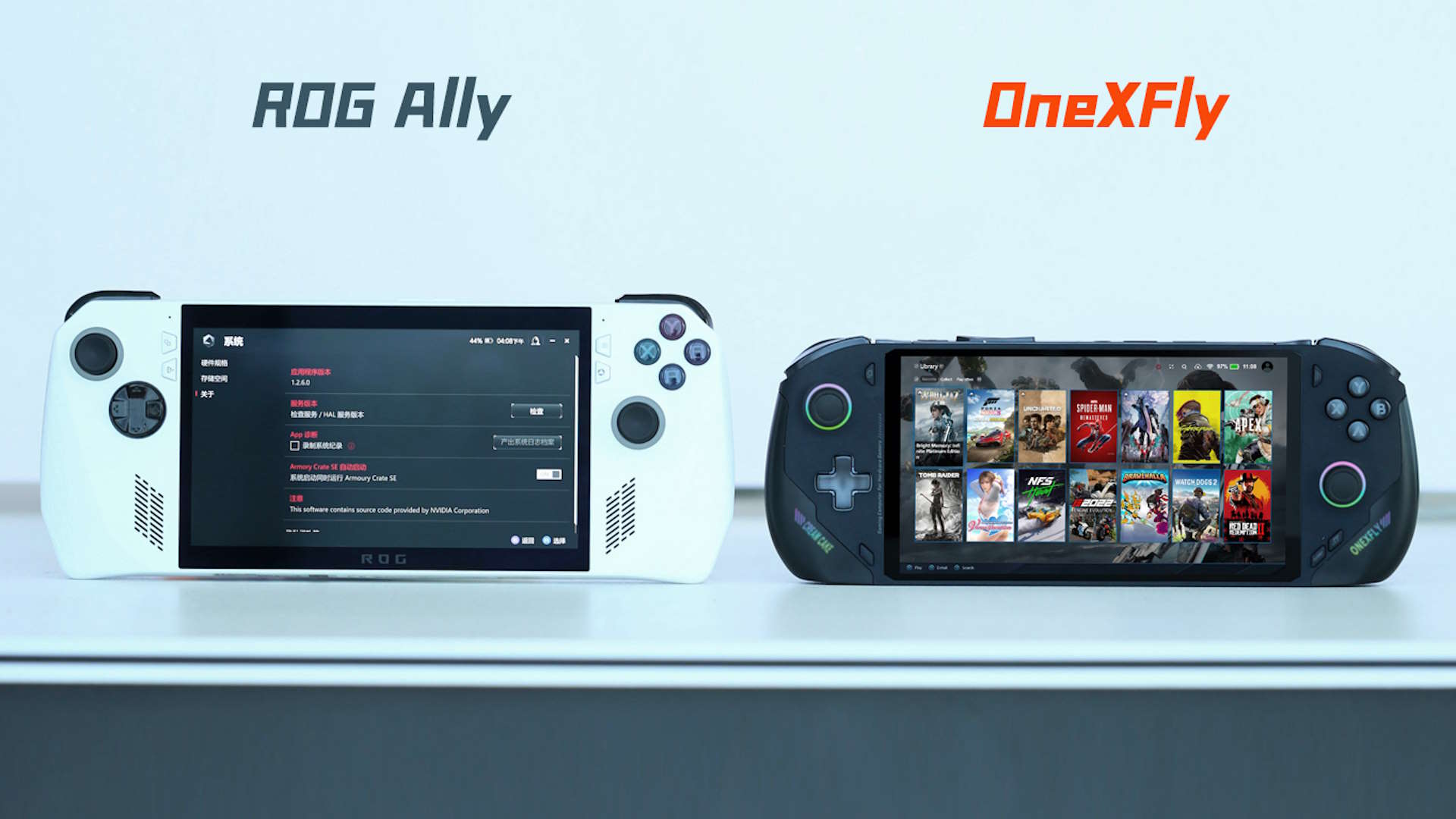

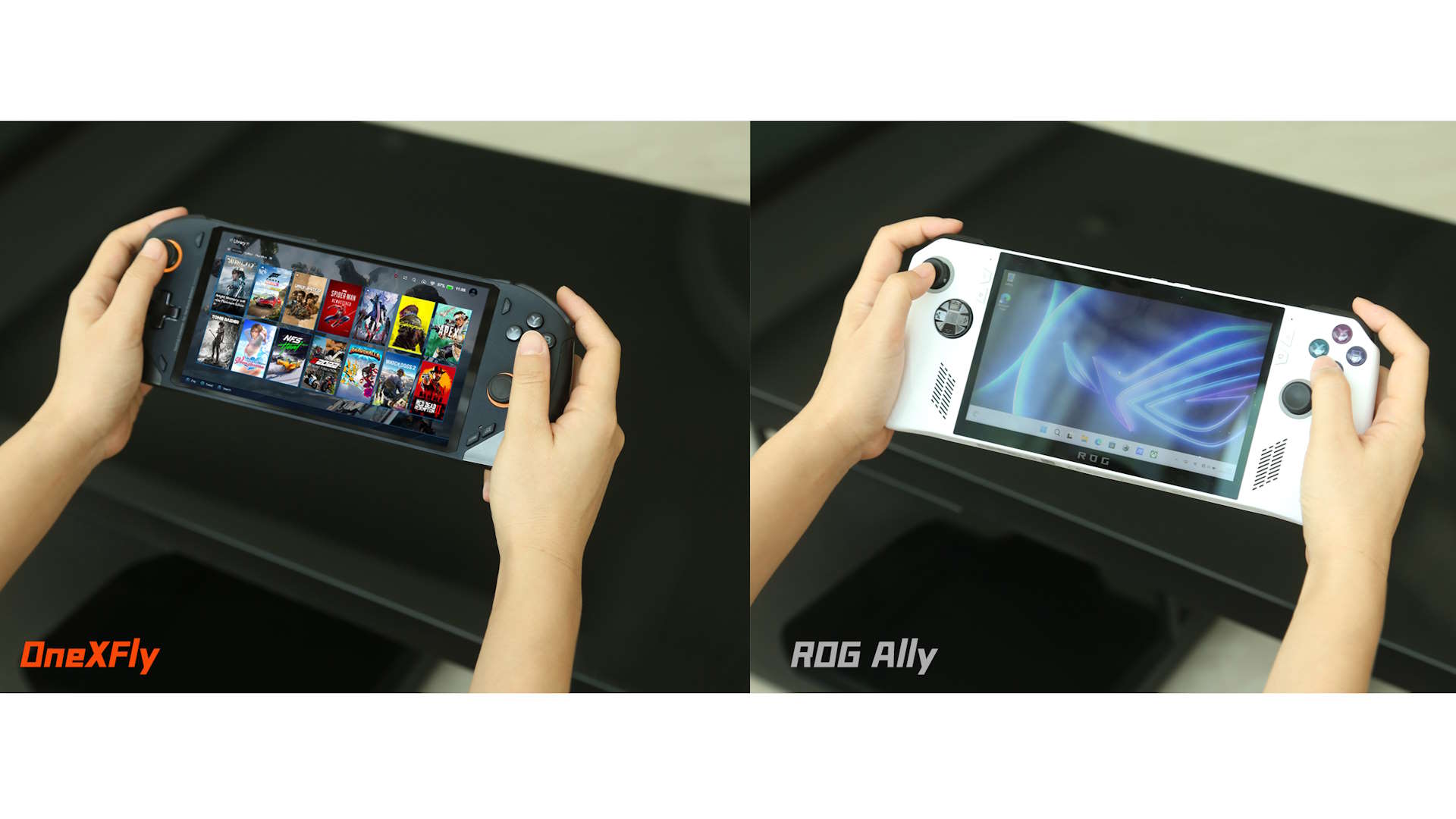
| Header Cell - Column 0 | OneXFly | ROG Ally | Steam Deck |
|---|---|---|---|
| Processor | AMD Ryzen 7 7840U | AMD Z1 Extreme | AMD Aerith |
| Cores | Threads | 8 | 16 | 8 | 16 | 4 | 8 |
| GPU | AMD RDNA 3 12CUs | AMD RDNA 3 12CUs | AMD RDNA 2 8CUs |
| Mermory | 16/32/64GB LPDDR5X-7500 | 16GB LPDDR5-6400 | 16GB LPDDR5-5500 |
| Screen | 7-inch | 7-inch | 7-inch |
| Resolution | 1920 x 1080 | 1920 x 1080 | 1280 x 800 |
| Refresh rate | 120Hz | 120Hz | 60Hz |
| Peak luminance | 450nits | 500nits | 400nits |
| Battery | 48Wh | 40Wh | 40Wh |
| I/O | 2x USB 4.0 Type-C, 1x USB 3.2 Type-A, 3.5mm audio, MicroSD | 1x USB 3.2 Type-C, 3.5mm audio, MicroSD | 1x USB 3.2 Type-C, 3.5mm audio, MicroSD |
| Dimensions | 264 x 98 x 23mm | 280 x 133 x 39mm | 298 x 117 x 49mm |
| Weight | 580g | 608g | 669g |
But it's the screen that I'm really looking forward to checking out on the OneXFly. On the surface it looks very much like the 7-inch 120Hz 1080p display of the ROG Ally, but OnexPlayer has gone for a far slimmer bezel on its new handheld. And when you put it and the Ally cheek-by-jowl it actually makes the thick edging around the Asus' panel look borderline ridiculous; they're almost twice the size of 5.2mm bezel on the OneXFly.
It's maybe not quite as bright, but its reported 450nits peak luminance isn't really that far off the ROG Ally's 500nits rating. And I was a big fan of that screen.
The other place the OneXFly has the edge over the Ally is in connectivity stakes. I love the fact OnexPlayer has dropped full Type-A USB ports onto its handhelds, but the OneXFly is also rocking a pair of full USB 4.0 Type-C connections, too.
I do have concerns, however.
The most critical one is about thermals. One of the things I like about the chonky boi A1 Pro is that it stays cool and quiet even when it's being taxed; the ROG Ally had a tendency to get a little shouty, though not in the same league as the Steam Deck it has to be said.
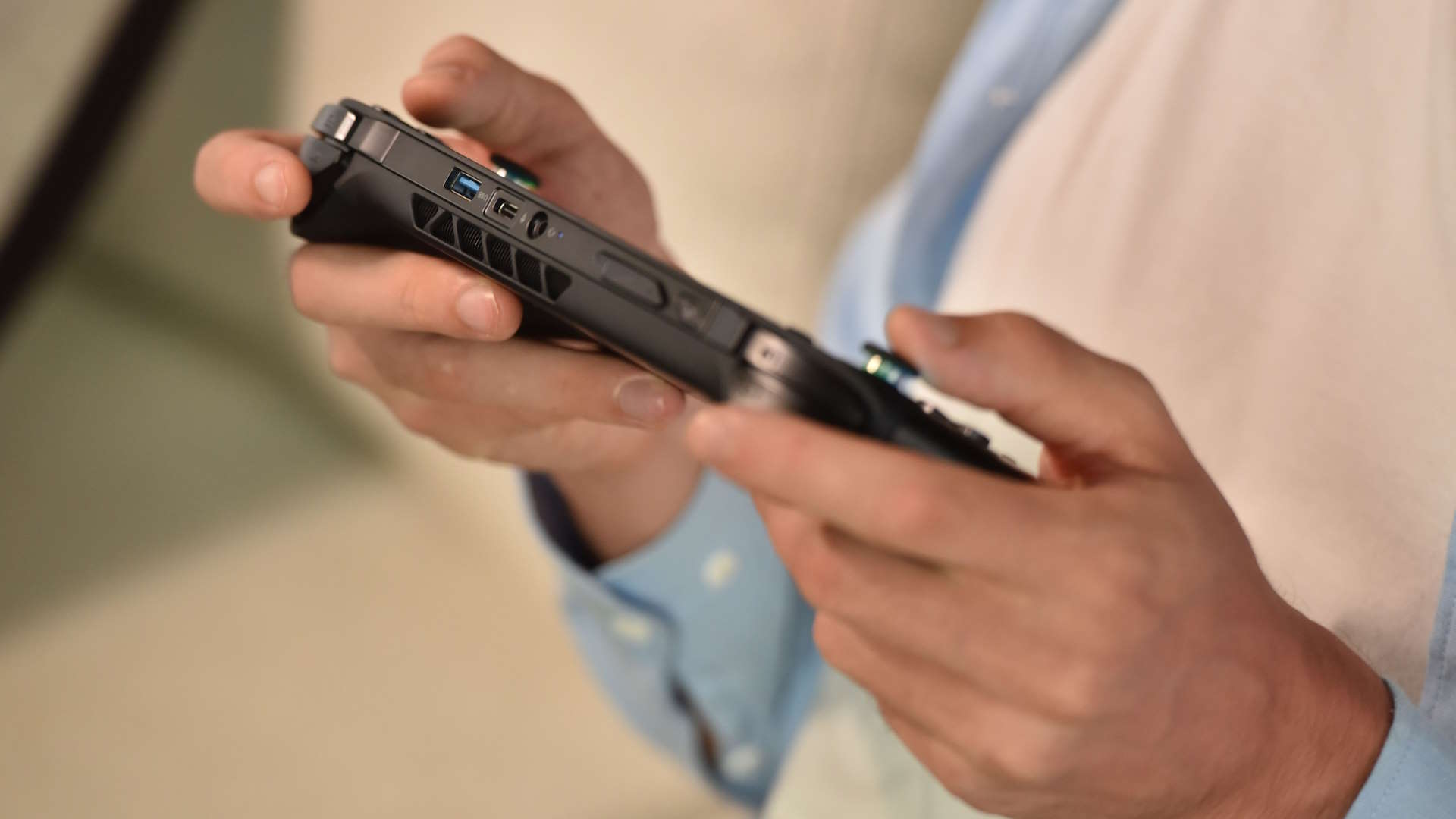
But the ROG Ally also has an admitted issue with heating up to such an extent that it does bad things to the MicroSD slot in its base. That's not a good look, and with the OneXFly's slighter frame that doesn't leave a lot of room for cooling inside.
We'll have to wait to get it in-hand ourselves to know exactly how it performs on that front, but OnexPlayer's product team has shared some images from initial thermal testing in a 25°C environment, at full 28W performance for an hour in-game. From the images you can see that it's maxed out at 41°C on the front and at the vents, and significantly cooler around where your hands will rest.
Compared with some of the thermal imaging that has been published around the ROG Ally under similar conditions, at actually looks to run a fair bit cooler than the Asus handheld. Hopefully the triple heatpipe design in the OnexFly is able to hit these temperature levels without having to ramp up the single fan too much.
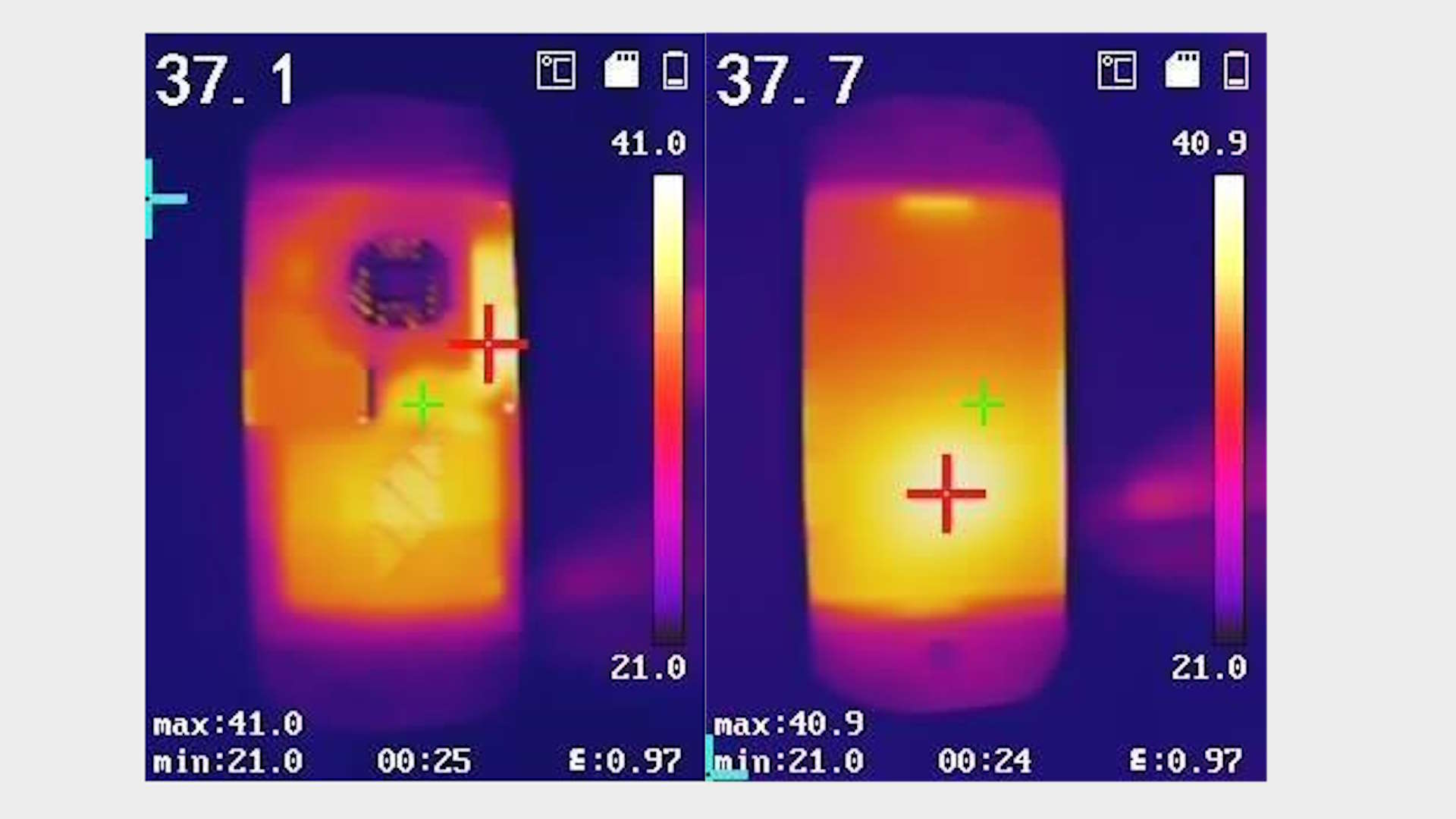
On the software side, I will say that my current experience with the OnexConsole application on the A1 Pro hasn't been great either. So I'm keen to see what's changed with the new release.
I'm told by OnexPlayer reps that the OneXFly "incorporates a frame rate adaptive power consumption feature, automatically adjusting power consumption based on the running game environment." And that sounds rather promising if you're running a game that isn't demanding every bit of that AMD APU at its heart. But the software does feel a little clunky in its current iteration.
Still, I'm excited to get my hands on the new handheld. It definitely looks like the most portable gaming PC I've seen so far, and ticks all my boxes for the hardware, too. The only remaining questions are going to be around pricing and availability, fingers crossed we get those details soon enough.

Dave has been gaming since the days of Zaxxon and Lady Bug on the Colecovision, and code books for the Commodore Vic 20 (Death Race 2000!). He built his first gaming PC at the tender age of 16, and finally finished bug-fixing the Cyrix-based system around a year later. When he dropped it out of the window. He first started writing for Official PlayStation Magazine and Xbox World many decades ago, then moved onto PC Format full-time, then PC Gamer, TechRadar, and T3 among others. Now he's back, writing about the nightmarish graphics card market, CPUs with more cores than sense, gaming laptops hotter than the sun, and SSDs more capacious than a Cybertruck.

